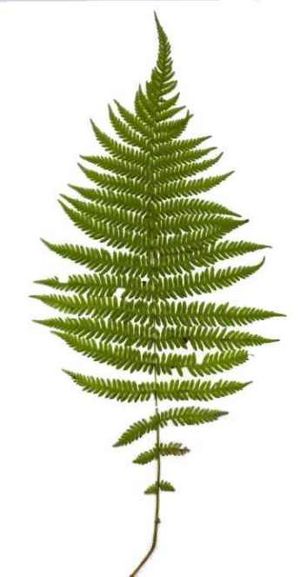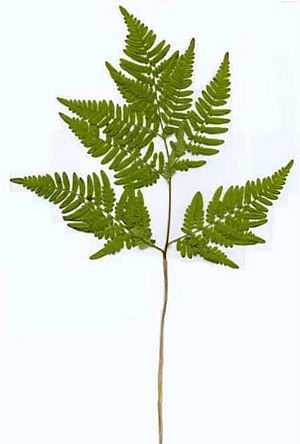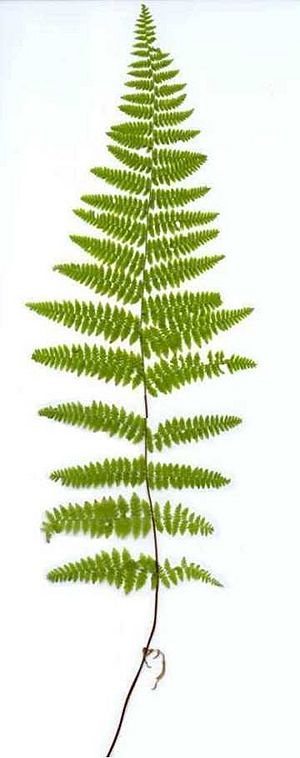List of ferns and fern allies of Soldiers Delight facts for kids
The Soldiers Delight Natural Environment Area is a special place in Baltimore County, Maryland, USA. It covers about 1,900 acres (7.7 square kilometers) of land. Much of this area has a unique type of ground called serpentine barren. This soil is very unusual and makes it difficult for most plants to grow. Because of this, Soldiers Delight is home to many rare and endangered plant species.
This article lists some of the amazing plants found here. These include ancient plant groups like clubmosses, spikemosses, horsetails, and ferns. Scientists have studied these plants for many years. The information comes from various publications and research.
Contents
Ancient Plants: Clubmosses and Spikemosses
Clubmosses and spikemosses are very old types of plants. They are often called "living fossils" because they look similar to plants that lived millions of years ago. Unlike flowering plants, they reproduce using spores, not seeds. They are usually small and grow close to the ground.
Clubmoss Family (Lycopodiaceae)
These plants often have small, scale-like leaves. They can spread across the ground like a mat or grow upright like tiny trees.
- Diphasiastrum digitatum - Northern running-pine, Flat-stemmed clubmoss, Ground cedar
- Diphasiastrum tristachyum - Blue clubmoss, Blue ground-cedar
- Huperzia lucidula - Shining firmoss, Shining clubmoss
- Lycopodium clavatum - Stag's-horn clubmoss, Ground pine
- Lycopodium obscurum - Groundpine, Tree clubmoss
Spikemoss Family (Selaginellaceae)
Spikemosses are similar to clubmosses but are often even smaller. They also reproduce with spores.
- Selaginella apoda - Meadow spikemoss
Ancient Plants: Horsetails
Horsetails are another ancient group of plants. They have hollow, jointed stems that look a bit like bamboo. Some types were once used for scrubbing pots because of their rough texture. They also reproduce using spores.
Horsetail Family (Equisetaceae)
These plants are unique with their ribbed, often green stems. They can grow in wet areas or open fields.
- Equisetum arvense - Common horsetail
- Equisetum hyemale - Scouring rush, Rough horsetail
- Equisetum sylvaticum - Wood horsetail
Amazing Ferns of Soldiers Delight
Ferns are a well-known group of spore-producing plants. They have beautiful fronds (leaves) that often unroll in the spring like a fiddlehead. Soldiers Delight is home to many different kinds of ferns, each with its own unique look.
Spleenwort Family (Aspleniaceae)
Spleenworts are often small ferns that grow on rocks or tree trunks.
- Asplenium platyneuron - Ebony spleenwort
Bracken Family (Dennstaediaceae)
This family includes some common and widespread ferns.
- Dennstaedtia punctilobula - Hay-scented fern
- Pteridium aquilinum - Bracken
Wood Fern Family (Dryopteridaceae)
This is a large family of ferns. Many of them are found in woodlands.
- Athyrium filix-femina - Lady fern
- Athyrium filix-femina var. asplenoides - Southern lady fern
- Cystopteris fragilis - Brittle fern, Bladder fern
- Deparia acrostichoides - Silvery Spleenwort
- Dryopteris carthusiana - Spinulose shield fern, Narrow buckler fern
- Dryopteris cristata - Crested wood fern, Crested buckler fern
- Dryopteris marginalis - Marginal shield fern, Marginal wood fern
- Onoclea sensibilis - Sensitive fern
- Polystichum acrostichoides - Christmas fern
- Physematium obtusum - Blunt-lobed woodsia
Adder's-tongue Family (Ophioglossaceae)
These ferns have a very different look from typical ferns. They often have a single leaf and a separate stalk that carries the spores.
- Botrychium virginianum - Rattlesnake fern
- Sceptridium dissectum - Dissected grapefern
Royal Fern Family (Osmundaceae)
This family includes some of the largest and most striking ferns.
- Osmunda cinnamomea - Cinnamon fern
- Osmunda claytoniana - Interrupted fern
- Osmunda regalis var. spectabilis - Royal fern
Polypody Family (Polypodiaceae)
These ferns often grow on rocks or tree trunks.
- Polypodium virginianum - Common polypody
Maidenhair Fern Family (Pteridaceae)
This family is known for its delicate and beautiful ferns.
- Adiantum pedatum - Northern maidenhair fern
Marsh Fern Family (Thelypteridaceae)
These ferns often prefer moist or marshy areas.
- Parathelypteris noveboracensis - New York fern
- Phegopteris hexagonoptera - Broad beech fern
See also
Soldiers Delight Natural Environmental Area plant lists
- List of graminoids of Soldiers Delight
- List of lichens of Soldiers Delight
- List of woody plants of Soldiers Delight
- List of wildflowers of Soldiers Delight
Related flora articles
- Lichens of Maryland
- Ferns of West Virginia
- Index: Plant communities of Maryland





